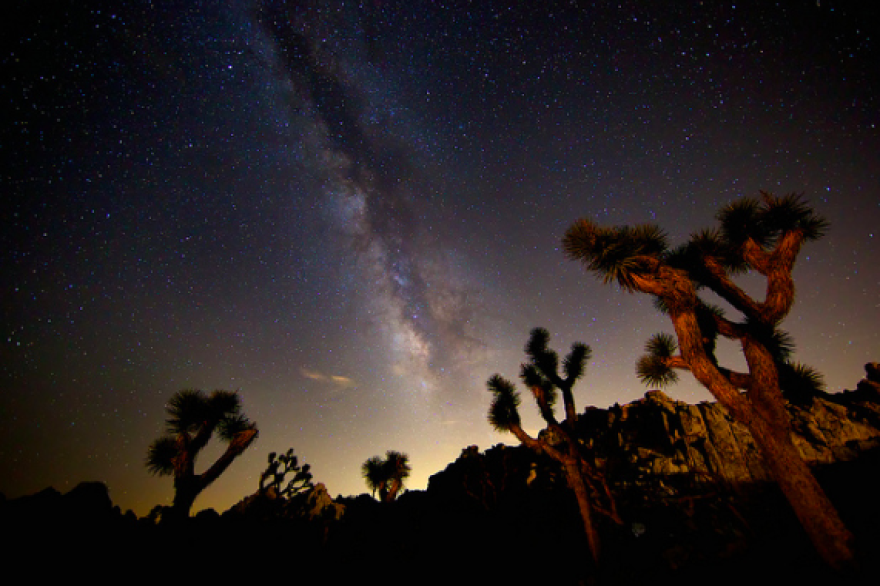We head up the road this week in search of a suitable place to look up and appreciate the dark night sky. Winter, when the air is crisp and clear, is perfect for such spectacular communion.
In the crazy rush of life on the human scale it’s easy to forget that the big, beautiful planet we live on, in all its immensity and complexity, is not even a speck of sand in the totality of the Universe, the reach of which we really can’t grasp. Which is fine. Because we can get the gist just by standing way off somewhere and looking up into the depth of the dark starry night, planet peeping, constellation counting.
My favorite star-watching observation of all time comes from Mary Austin, literary cowgirl, really, and a California desert denizen of the early 1900s. In her classic book The Land of Little Rain she described the power of her favorite night sky.
“For all the toll the desert takes of a man it gives compensations” she wrote, “deep breaths, deep sleep, and the communion of the stars.… It is hard to escape the sense of mastery as the stars move in the wide clear heavens to risings and settings unobscured. They look large and near and palpitant; as if they moved on some stately service not needful to declare. Wheeling to their stations in the sky, they make the poor world-fret of no account. Of no account you who lie out there watching, nor the lean coyote that stands off in the scrub from you and howls and howls.”

Amen. I know other people disagree with me, but I think it’s good to remember where we really are in the larger scheme of things. At least sometimes.
But where do you go to take in—or, more accurately, be taken in by—the night sky that Austin and others so elegantly describe?
The International Dark Sky Association works hard to protect our skies from the light pollution that so confuses wildlife and plants—affecting entire ecosystems—and also robs us of even the possibility of night-sky reveries. But it also gives credit where it is due, acknowledging and listing those places that are effectively protecting and preserving night skies—so we can come appreciate them. There aren’t a lot, anywhere in the world. Surprisingly, quite a few are here in California, or not far away.
In Northern California, the closest reserve—and there are just a handful of these in the world—is the Central Idaho Dark Sky Reserve, taking in some 1,416 square miles, including the remote and rugged lands of the Sawtooth Mountains—national forest, two official wilderness areas, and the world-class Sun Valley ski area.
In Southern California, head for the desert, like Mary Austin would do. Winter is high season, so it may get crowded. Particularly Anza-Borrego Desert State Park in eastern San Diego County, with night-sky talks offered year-round. Nearby Borrego Springs is California’s only designated Dark Sky Community. The town offers educational events year-round and also sponsors the annual Borrego Springs Dark Sky Weekend in early February. Also don’t-miss stargazer destinations: internationally famous Death Valley National Park and Joshua Tree National Park.




